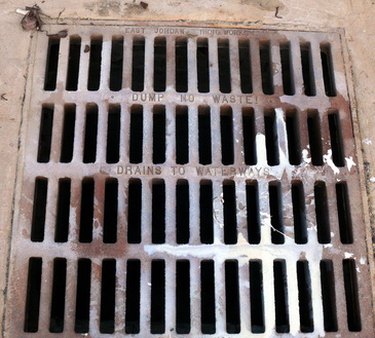
Dry wells are temporary water storage containers to help deal with excess rainwater from storms. These containers are usually placed below the ground, and slowly discharge their contents into the surrounding soil. These wells can be a big help in the event of an overloaded storm drain or saturated soil, reducing the volume of runoff from roofs. However, dry wells can have their problems.
Slow Drainage
Video of the Day
Over time, dry wells may become clogged with sediment or other debris. This can slow or completely stop drainage, leading to backups, wet areas pooling over the dry well and other problems. According to information published by Tredyffrin Township in Chester County in southeast Pennsylvania, homeowners should inspect dry wells once per season, as well as after each storm where more than one inch of rain falls. When a dry well takes more than three days to drain, excavate the well, pump it dry and clean out the piping leading into the well.
Video of the Day
Basement Seepage
In some locations, installing a dry well can lead to water seeping into a basement or cellar. Installing a dry well up-slope from a basement or within 10 feet of the house can increase this risk. Keep dry wells away from steep, man-made slopes and at least two feet above the seasonal high water table to decrease the risk of seepage. In cases where an existing dry well is leaking into a basement, the entire well must be excavated and moved.
Odor
A poorly draining dry well becomes a breeding place for bacteria, and can produce unpleasant smells. Regular clean-out and maintenance of the well decreases the risk of this problem and encourages speedy draining. If your dry well is producing odors, clean out all filters leading to the well, including the sump and roof drainage filters, as well as the well itself. This should improve drainage and eliminate the low-oxygen conditions that encourage bacterial growth.
Persistent Poor Drainage
Some soil types are inappropriate for dry wells, and will not drain correctly, even if the well is maintained with great care. According to the New Jersey Department of Environmental Protection, soils with poor permeability and high percentages of clay are inappropriate for dry wells. Use some other drainage method on sites with these soil types.